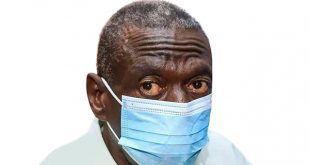
By Henry Zakumumpa
Researchers are yet to fully understand the causes of discordance among couples although several researches are ongoing.
Habib Mukasa plies the Mombasa-Kampala route transporting second hand Japanese cars for a major car dealer with a bonded warehouse in Nakawa in Kampala. Mukasa spends the better part of the year on the road.
“Because of the number of days I am away from home I often get ladies of the night on the road to quench my thirst,” says Mukasa, who discovered last year that he is infected with the AIDS virus.
“After insistence from my wife, we both went to AIDS Information Centre to test for HIV with my wife and although my test turned out positive, my wife’s results were negative,” says Mukasa (not real name).
The increasing rate of discordant couples is changing the dynamics of the AIDS pandemic in Uganda thereby posing new challenges to HIV prevention and treatment.
“Yes, discordance in couples with HIV is on the increase in Uganda although we are yet to fully understand the causes of this phenomenon,” says Dr Deus Lukoye of the Ministry of Health.
HIV discordance is where one of two long-term sexual partners is HIV positive while the other is HIV negative.
According to WHO up to 50% of people living with HIV are in relationships where only one of the partners is HIV positive.
In a World Bank study conducted by Damien de Walque in five African countries including Kenya and Tanzania, an astonishing two thirds of the infected couples were discordant couples.
Uganda’s rate of discordant couples has been on a steady increase. Currently, almost a half of HIV-infected married couples have HIV negative partners.
In a joint study by Centers for Disease Control and AIDS Information Centre (AIC) entitled “Determinants of HIV discordance within couples receiving VCT in Uganda”, out of the 1,856 couples who were sampled for the study,74% were HIV discordant. The same study found that more females (57%) than males (43%) were HIV discordant.
According to the HIV/AIDS Sero-Behavioural Survey (2004-2005), which was launched on June 19, 2006, five percent of about 4,000 cohabiting couples in Uganda were found HIV discordant. “The fact that there are more cohabiting couples who are discordant for HIV than there are cohabiting couples who are both infected, represents an unmet HIV prevention need for the country. This is because the vast majority of these cohabiting couples do not mutually know their HIV status and therefore are not empowered to take action to prevent further spread of the disease,” the report states.
The survey also suggests that in Uganda, discordant couples are more common in polygamous unions and is more common among urban than rural couples.
There are several misconceptions about the causes of discordant couples and medical and social researchers are yet to fully understand the causes of discordance among couples. Several researches are ongoing to understand the causes of discordance including one funded by the Bill and Melinda Gates Foundation in S. Africa, Botswana, Kenya, Uganda, and Rwanda.
“The virus is not systematically transmitted at each and every encounter and also depends on how far the HIV-positive person is in the progression of his condition,” according to Dr Alexander Boon of Doctors Without Borders.
Centers for Disease Control lists factors that influence the transmission of HIV as the frequency of sexual exposures, level of virus, injury of genital tract, among others.
Researchers now suggest there may be biological and social factors that would help understand the mystery of HIV discordance among sexual partners. Scientists suggest some people have unique cells that do not allow the virus to mutate in them although such findings are not conclusive.
The rising discordance among couples in Uganda poses new challenges in HIV prevention and treatment.
According to Dr Lukoye, discordant couples represent a critical risk group since the HIV negative partner is at a high risk of infection. Many couples with discordant partners are still reluctant to use condoms even when they know their partners’ status.
A research led by legislator Dr Elioda Tumwesigye in Uganda in 2006 found that 96% of sexually active discordant couples had not used a condom in their last sexual encounter, pointing to the grave challenge for HIV prevention efforts in Uganda.
Even those who know their discordance have difficulty maintaining their safer sex strategies such as use of condom and revert to unprotected sex since ‘condoms did not belong in a marital bed.’
Specialised counseling messages for discordant couples seems especially critical.
Other strategies such as the pre-exposure Prophylaxis HIV prevention are being applied to prevent infection. This involves administering a pill to a negative partner in a relationship to prevent infection.
However one of the big challenges is the low percentage of Ugandans who know their sero- status. The Uganda AIDS Commission UNGASS 2010 report says only 20% of Ugandans have ever tested for HIV. This means that thousands of Ugandans live in discordant partnerships without even knowing it.
 The Independent Uganda: You get the Truth we Pay the Price
The Independent Uganda: You get the Truth we Pay the Price


